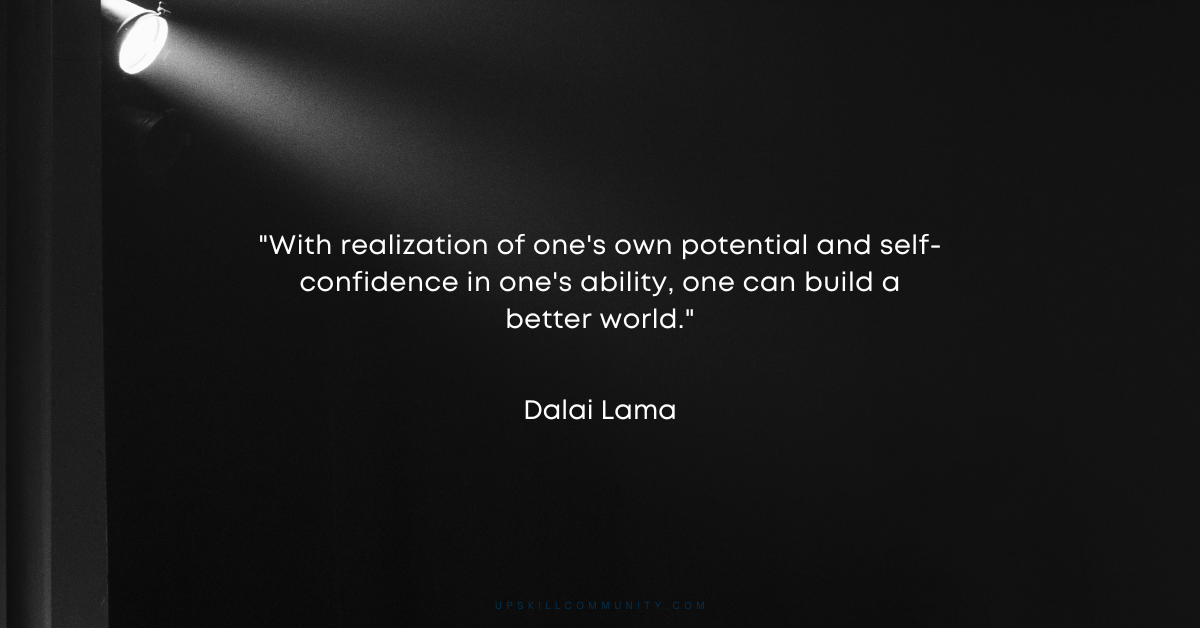5-Step Path to Overcoming Low Confidence and Achieving Success
Dont have time to read? You can watch this video here:
Milestones
First milestone: No confidence
Sal was brilliant with numbers. He studied at reputed universities in the UK and the US. With his excellent accounting skills, he decided to help friends file their taxes. With time, more and more people started requesting Sal for his services. However, he lacked the confidence to ask people to pay him.
Lesson: Based on this, we can tell Sal had NO confidence in himself and failed to see the worth of his services.
Second milestone: Low confidence
Overwhelmed with work, Sal couldn’t take more and decided to take a small break from filing people’s taxes. To Sal’s surprise, people praised his flawless work and said they are willing to pay for his services. Seeing the demand, Sal decided to resume his services, but this time with a fee. Unfortunately, he charged people pennies. The number of clients grew tremendously, and he was overwhelmed again.
Lesson: Here, we saw that Sal started valuing his work a little more, but he couldn’t free himself from the heavy workload. There was still a lot of work to do on himself. He had to learn to value his services properly.
Third milestone: Grow confidence
Sal worked 80 hours a week. Unable to take strategic steps and with little money to hire someone to help him, he made mistakes. Few of his clients weren’t happy with this. Seeing he was extremely overworked and was nearing a breakdown, he decided to take a sabbatical. A few weeks later, clients reached out to him, asking about his return as they couldn’t manage without him. They mentioned they were willing to pay a higher price. Sal was delighted to hear that as he wasn’t expecting this response. He soon returned from his break, increased his fees and hired a helping hand to divide his workload.
Lesson: We can see, when we’re low in confidence, we’re vulnerable and nearing a meltdown. Sal got knocked down but couldn’t get back up without help and support. He should’ve given himself space to make mistakes and dug deeper into why he was making them in the first place. That said, it is worth noting that when Sal received feedback from the clients, he accepted positive feedback which contributed significantly to his confidence.
Fourth milestone: Know what makes you confident
Sal noticed that after hiring a person to help him, the number of customers grew gradually, he made no mistakes, and his hours of work were reduced to a reasonable amount of time. He was in a more comfortable space after facing many distressing times. Eventually, Sal was better equipped to take critical feedback and took smaller breaks in between to balance his work and personal life.
After working on growing his confidence, it was evident that Sal valued his skills, money, time and help. He developed a strong foundation that helped him maintain his confidence.
Fifth milestone: Sow confidence
As Sal’s business grew, he started meeting others with similar issues he once had. Now that he’s gone through the journey of confidence building, he could use that knowledge to help other people in their journey.

Revising the five milestones
After looking at 5 confidence milestones, we’ll detail what to do in each milestone.
Before we get started, it’s important to note that EVERYONE can build confidence through commitment and by taking proper steps.
First two milestones: No and low confidence
If you find yourself at the beginning of your journey to becoming confident, it is recommended that you go back to Blog 66 to 68, where we covered the CIA formula.
It consists of the following:
- Setting goals
- Defining the scope
- Looking at who you are
- What you bring to the table
- The reasons why you want to achieve confidence
- What is Confidence
It will help if you take some time to do a self-analysis. Look at your strengths, weaknesses, opportunities you can leverage with your strong points and threats caused by your shortcomings.
Third milestone: Growing confidence
Growing confidence can be done in many ways, including getting feedback and ACCEPTING it. Many people reject positive comments from others and refuse to recognize their work.
Sal, while doing taxes, also worked full-time at a bank. For his excellent performance, his supervisor offered him multiple promotions. However, he kept rejecting them. He realized he was making too little when he discovered that one of the accountants working for him earned nearly as much as him. Sal failed to value his work adequately.
This story properly reflects the importance of accepting feedback and valuing your work, which is part of growing confidence.
Finally, you should give yourself space for failure and set realistic goals to achieve to grow your confidence.
It is essential, especially when your confidence is at its most fragile state, not to forget that failing does not mean the end, nor does it reflect who you are. Too many of us are unforgiving towards ourselves for failures that we would’ve been perfectly fine forgiving had they been from someone else. We should always try to extend the grace we’d offer others to ourselves equally.
Setting realistic goals is an essential part of growing your confidence. While you should forgive yourself when you fail, you should not strive for failure. Thus, it is best to increase your chances of success when you want to achieve a goal by making it more realistic according to your current abilities. By taking smaller steps, you will eventually be able to complete more ambitious goals.
Fourth milestone: Knowing what makes you confident
After growing your confidence, you should know what makes you confident and how much value they hold.
Previously, we saw that Sal discovered an employee he supervises earned more than him. Now, he wanted to get promoted as well. Hence, he started reflecting on the values of his contributions to the company and made use of these to fuel his confidence and convince his supervisors to provide him with a raise.
You should take some time to think about your accomplishments and the contributions you’ve made. You’ll become more confident knowing who you are and what you bring.
Fifth milestone: Sowing confidence
Finally, when you’re done with your journey, you can help sow the seeds of confidence in the people around you. No matter the age group, environment, or organization, there is a distinct lack of this skill everywhere, and it is now your turn to help other people gain confidence.
Key takeaways:
- When you have little to no confidence, you should analyze yourself and reflect on why you want to be confident.
- When growing your confidence, you should always forgive yourself when you fail and set realistic goals.
- Once you know the value of your skills and contributions, reflect on them and use this reflection to fuel your confidence.
- When you become more confident, start reaching out to other people and helping them in their journey.
We’ve covered the five milestones for measuring confidence and growing it. Next week, we’ll learn about the five steps to networking. Thanks for reading! See you next week!

